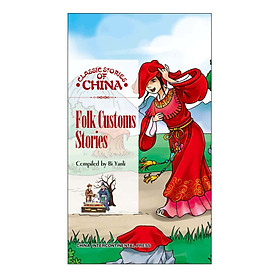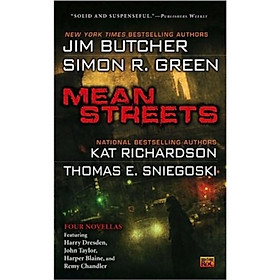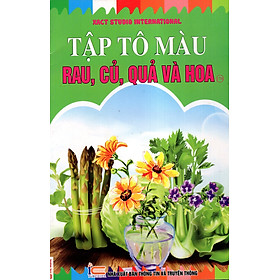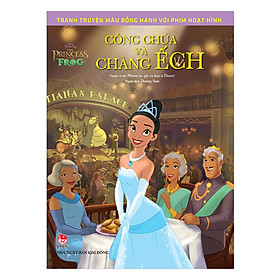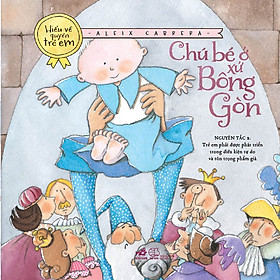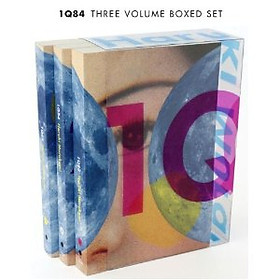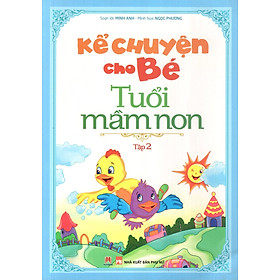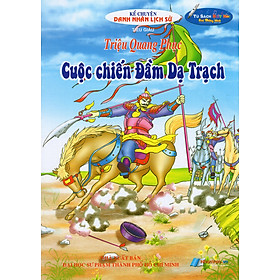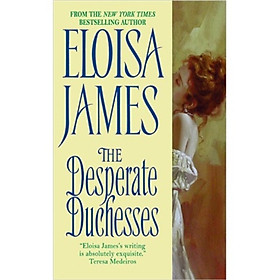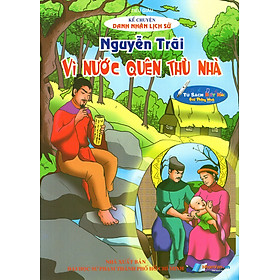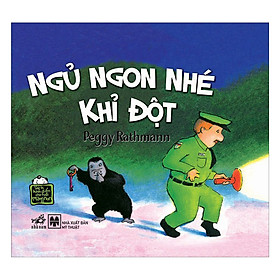Classic Stories of China: Folk Customs Stories
Main Content Chinese classic stories have inherited and passed on the abundant historic treasury of the Chinese nation that has been accumulated over several thousand years, mirroring the...
SKU: 6613610715444
Main Content
Chinese classic stories have inherited and passed on the abundant historic treasury of the Chinese nation that has been accumulated over several thousand years, mirroring the politics, military affairs, culture, folk customs, prevailing moral practices, ideals and interests of ancient China. Through those stories, people can gain an understanding of China's long history and achieve an insight into the profound historical origins of Chinese culture.We have identified stories from the vast number of Chinese classic stories, and complied them into this collection. All stories are illustrated in concise words and expressions, and vivid pictures, which will help the process of reading enjoyable. The series of Classic Stories of China comprises nine books: Scenic Spots Stories, History Stories, Myths Stories, Wisdom Stories, Folk Customs Stories, Ancient Fables, Folk Tales, Idiom Stories, Drama Stories. May those books be your good teacher and helpful friends in learning Chinese culture.
Catalog
CONTENTS
The Agricultural Calendar and the 24 Solar Terms
Laba Festival
Spring Festival (I)
Spring Festival (II)
Lantern Festival
Pure Brightness Festival
Dragon Boat Festival
Double Seventh Festival
Mid-Autumn Festival
Double Ninth Festival
12 Chinese Zodiac Signs
Modest and Tasteful Zhongshan Suit
No Food Is Better Than Jiaozi
Beancurd - Make the Best of Mistake
“Mendang Hudui”: Interesting Words and Expressions
Full Month Party and Grabbing Test
Birthday Celebration and Longevity Celebration
Red Veil
Double Happiness
Burning Paper Money
Implications of Colors
Connotation of Numbers
Gods of Blessing, Prosperity, Longevity, Happiness and Wealth
Mascots
Digest
Burning Paper Money
Every time when the Pure Brightness Festival, Spirit Festival (15th day of the 7th lunar month) or Spring Festival and any other traditional festival comes around, before the tomb or on the crossroads in the evening, fires will appear with black butterfly-like ashes flying in the wind, feeling so mysterious. This is the custom of burning paper money to worship the deceased.
There are many legends about the origin of this, one of which is associated with Cai Lun (61-121). According to the story, paper sold so well when papermaking had been improved by Cai Lun that his brother and sister-in-law followed Cai Lun to learn the skill. However, they were so anxious to achieve quick success and get instant benefits that they hurriedly opened a paper-making shop without mastering the necessary arts. As a result, the paper they made did not sell well owing to poor quality. The couple was very worried, and, in order to get out of difficulty, the wife thought of an idea.
She pretended to have died from sudden illness one midnight. The sad husband cried over her coffin, burning paper. After a while, a voice came from the coffin. The people hurriedly opened the coffin, and the woman jumped out. The people present were all frightened. She explained that she had bribed the goblins in the underworld to make the mare go for her, and gave money to the King of Hell, so he would let her go back. The people wondered where the money came from. Cai Lun’s sister-in-law explained that the paper her husband burned was money in the underworld. People suddenly realized that the humble paper could play such a great role in the underworld, so they bought Cai’s paper and burned it to the memory of their deceased loved ones. As money could make the mare go, if their loved ones had money, they could suffer less, and perhaps could return to life. From then on, burning paper money has been spread far and wide.
There are varieties of paper money. One is made by cutting the white or yellow paper into a shape of a copper coin with a square hole. Another is made by knocking the ironmade money mold above the yellow paper with a mallet to produce the shape of money. There is one s made by printing, which has become more popular in recent years. Similar to the notes circulated on Earth, the paper money is printed with “Mingtong Bank” or “Heaven and Earth Bank” and so forth. It generally has brighter colors and bigger face values, and even paper money in dollar and euro is available. There are also gold and silver ingots folded with gold and silver foil paper. Paper money is usually burned, but also thrown to the sky along the route of the funeral procession, or hung on the graves, which are generally for the purpose of turning away the wandering ghosts, also known as money paid for passage, generally in the form of cut paper money.
Paper money should be burnt before the tomb, however, as many people have moved to other places, it is not so easy to do so now. So the alternative is to draw a circle with a piece of white chalk at an intersection, with the exit facing the direction of the tomb of the deceased. In order to make sure the accurate delivery by the postman in the underworld, the name and address must be clearly written on the envelope packed with paper money. Of course, a few pieces of paper money should be burned to the wandering ghosts first, to avoid theft.
Paper money will not only be burnt on Pure Brightness Festival, Spirit Festival and traditional festivals, but also on “Burning Seven” and “Burn Anniversary”. “Burning Seven” means that every seven days from the day of death constitute a memorial point, called the first seven and on to the seventh seven. Among them, the first, third, fifth and the seventh seven are the most important memorial days. According to folklore, the first seven is the time for the soul of the deceased to go home, so a memorial ceremony will be held at the dwelling, including burning paper money, lighting candles and serving food. On the other six memorial days, paper money will be burnt before the tomb. “Burn Anniversary” means burning paper money before the tomb on the first anniversary of the death, with other offerings also included.
Burning paper money has a long history in China, but it has often been criticized; for example, some of the poets in the Tang Dynasty (618-907) criticized this practice. Many people now pay attention to environmental protection and advocate an online memorial, however, as one of the ways to the living one’s comfort, the custom of burning paper money has continued. On May 18, 2008, the State Council announced May 19 to 21 as the period of national mourning for the numerous victims of the Wenchuan earthquake on May 12 of that year. May 19 was just seven days after the day of earthquake, which was the first seven for burning paper money.
Preface
Preface
As the old Chinese saying goes: “Ask about the customs and taboos in any strange place you’re going to visit in order to avoid trouble.” This is sound advice. At present, more and more foreigners are coming to China, and having frequent dealings with Chinese people. In this context, in order to really understand Chinese culture, foreigners need to learn about Chinese customs and habits first.
Folk customs originate and are inherited from civil society, and are passed on from generation to generation. China has a long history and vast territory and has a whole host of customs. The folk customs collected in this book are well known in most Chinese areas inhabited by the Han people, and contain four parts: festivals and holidays, etiquette and rituals, basic necessities of life, and folk worship and taboos.
Because of limitations of space, we cannot list all folk customs. But it is sufficient to offer a comprehensive understanding of Chinese folk customs. We sincerely hope readers can enjoy these colorful old Chinese folk stories. If you come to China to work or travel in the future, maybe you will pay more attention to Chinese customs, and show a better understanding of Chinese folk culture. After reading this book, maybe you will get a comprehensive grasp of Chinese local lives more quickly, and be able to deal with Chinese people more easily.
Giá sản phẩm niêm yết của Fiction - Literature Classic Stories of China: Folk Customs Stories trên các sàn TMĐT đã bao gồm thuế theo luật hiện hành. Tuy nhiên tuỳ vào từng loại sản phẩm hoặc phương thức, địa chỉ giao hàng mà có thể phát sinh thêm chi phí khác như phí vận chuyển, phụ phí hàng cồng kềnh, ...
Mức giá và các nhà cung cấp được liệt kê tại đây chỉ dùng để bạn tham khảo. Khi quyết định mua hàng bạn cần xem xét thêm về đánh giá của khách hàng tại shop đó. Sau cùng bạn chọn mua sản phẩm từ nhà cung cấp mà bạn cho là uy tín nhất với mức giá hợp lý nhất. Chúng tôi không trực tiếp bán hàng cũng như vận chuyển và không chịu bất kỳ trách nhiệm nào về quyết định mua hàng của bạn.
| SKU: | 6613610715444 |
|---|

